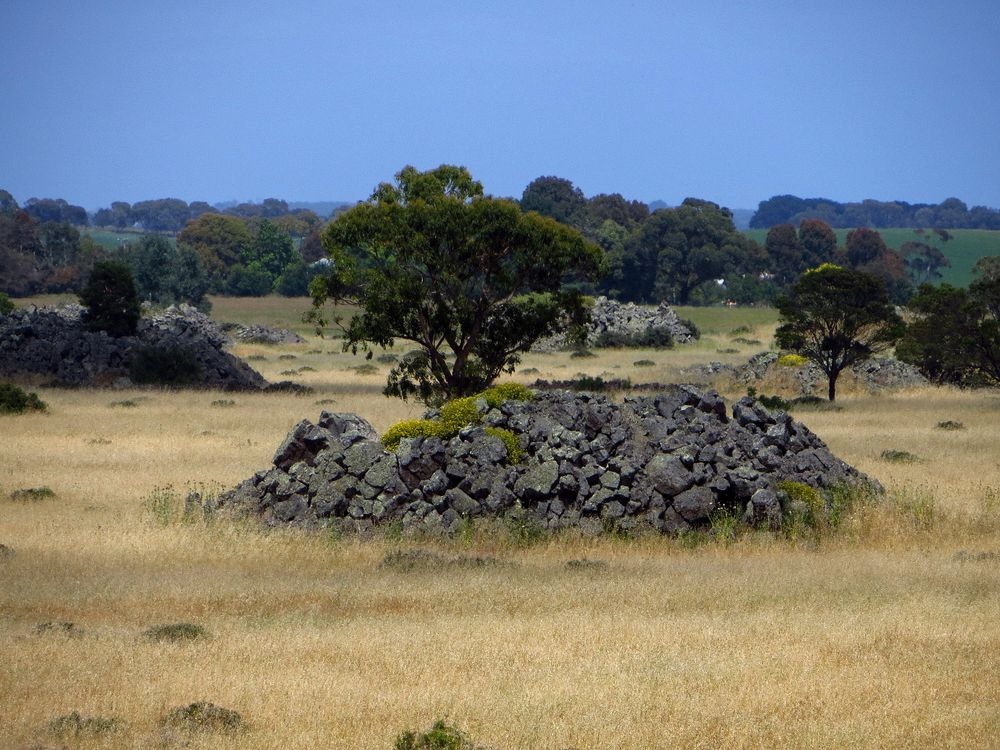In the relatively flat Harman Valley, located between
Wallacedale and Byaduk, south of Mount Napier in Victoria,
Australia, are peculiar rocky mounds, like blisters on land. Some
of them are up to 10 meters high and 20 meters in diameter. These
mounds are known as tumuli or lava blisters.
Tumuli are formed in slow-moving lava fields. When lava flows,
the surface often cools to form a thin crust, but underneath the
lava is still viscous and molten. If the advancing lava underneath
becomes restricted it may push up on the hardened crust, causing
soft spots in the crust to rise up like a bubble. Generally, these
structures grade into elongate forms called pressure ridges, but
occasionally, they creates smaller, steep-sided domes called a
tumulus. Usually, the dome is completely solid, but occasionally,
part of the liquid core drains out and the top of the dome subsides
to leave a central hollow or doughnut-shaped mound.

While tumuli aren’t a rare geological formation, the ones in
Harman Valley are particularly notable for the exceptionally
vesicular nature of the lava in the tumulus, suggesting that they
developed in response to local gas pressure points. These tumuli
formed about 32,000 years ago when Mount Napier, one of Australia’s
youngest volcanoes, erupted and the lava flowed over a
water-saturated swamp causing the ground water to vaporize and
produce pockets of gas and high pressure.
In the Harman Valley today, there are dozens of tumuli
consisting of bare rocks. The best examples are located on Old
Crusher Road, in the town of Byaduk.
Other places where you can see tumuli are Iceland, Hawaii and
Argentina.


A volcanic blister (tumulus) just off Old Crusher Road, near
Byaduk, Victoria, Australia